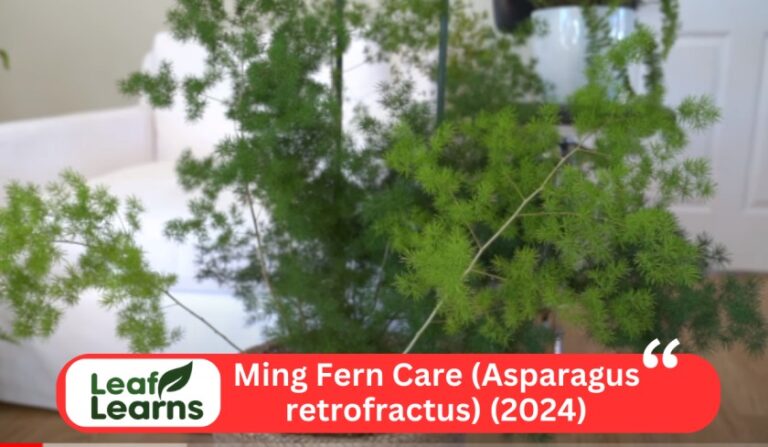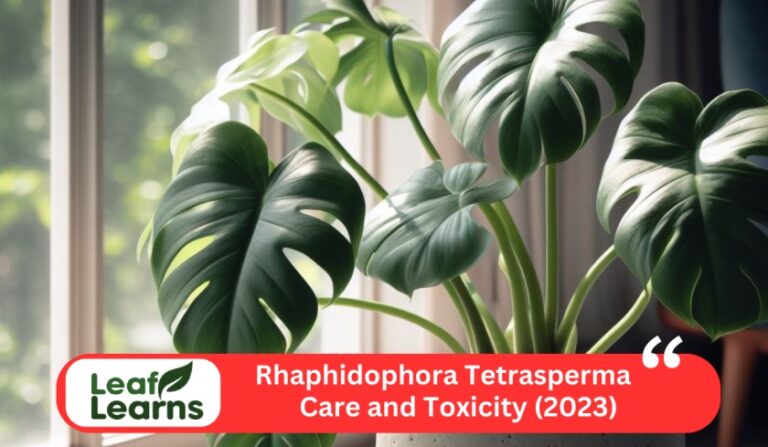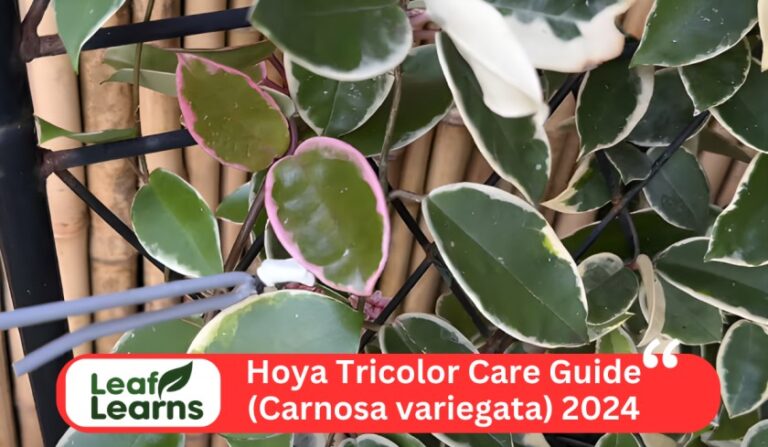Alocasia Amazonica Polly Care | Best African mask plant
Alocasia Amazonica Polly care A stunning tropical houseplant with the widespread names African Mask Plant and Polly, Polly is prized for its distinctive and eye-catching leaf.
This plant is native to Southeast Asia and is a member of the Araceae family. It is valued for its big, arrowhead-shaped leaves, which give it its name and resemble the face of an Amazonian traditional mask.
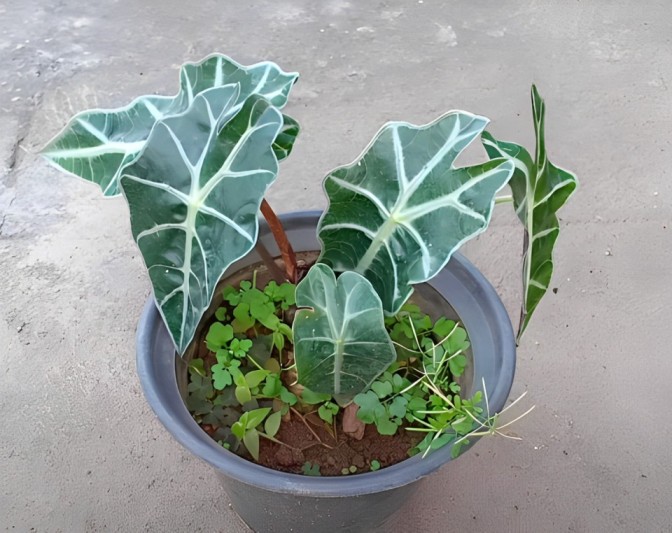
Contents
- 1 OUR TOP 3 CARE TIPS
- 2
- 3 Alocasia Amazonica Polly Care Guidelines
- 4 Troubleshooting Yellowing Leaves in Alocasia Polly
- 5 About Alocasia Amazonica Polly
- 6 Alocasia Amazonica & Alocasia ‘Polly’ Care
- 7 Alocasia ‘Polly’ & Alocasia Amazonica Location And Temperature
- 8 Planting Alocasia ‘Polly’ And Alocasia Amazonica
- 9 Watering Alocasia ‘Polly’ & Alocasia Amazonica
- 10 Humidity For Alocasia ‘Polly’ & Alocasia Amazonica
- 11 Alocasia ‘Polly’ & Alocasia Amazonica Propagation
- 12 Feeding Alocasia ‘Polly’ & Alocasia Amazonica
- 13 Alocasia Amazonica & Alocasia ‘Polly’ Dormancy
- 14 Is Alocasia Toxic To Cats And Dogs?
- 15 Buying Alocasia Polly And Alocasia Amazonica
- 16 Conclusion
- 17 FAQs
OUR TOP 3 CARE TIPS
Top tip 1
When Polly is growing new leaves it’s important to water her more frequently as she will be using more energy.
Top tip 2
While Polly adjusts to her new home, it’s very normal for her to lose a few leaves. Trying to move her about too much will prevent her from settling in and result in further leaf loss.
Top tip 3
Polly sheds her leaves quickly and will lose a few stems to make place for new growth.
polly serena alocasiazebrina fortifying-houseplant-fertiliser peat-free-soil
| Common Name | African mask plant |
| Scientific Name | Alocasia amazonica ‘Polly’ |
| Family | Araceae |
| Height | Up to 24 inches high and 10 inches wide |
| Light | Bright indirect |
| Soil type | Aroid soil |
| Water | Keep lightly moist |
| Soil pH | Acidic |
| Bloom time | Summer |
| Flower colour | Pale green, cream |
| Distribution | Southern Asia |
| Plant type | Bulb |
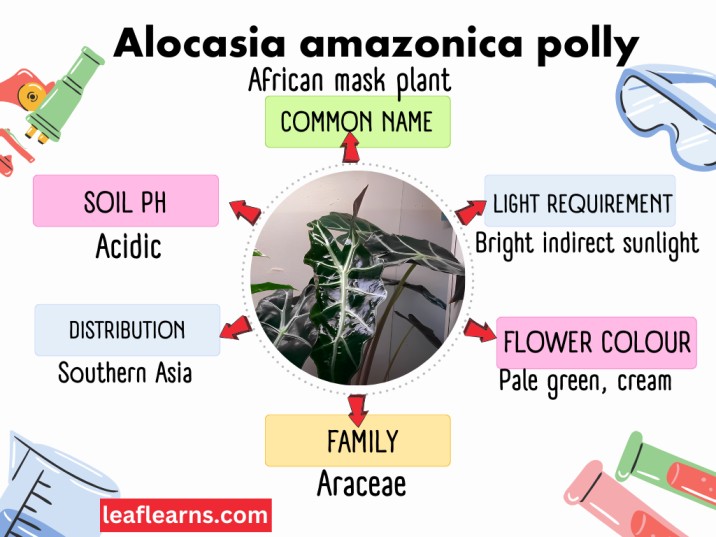
Alocasia Amazonica Polly Care Guidelines
Alocasia Polly, also known as Alocasia Amazonica Polly, is a striking tropical plant that requires specific care to thrive. When it comes to its exposition, Alocasia Polly prefers bright, indirect sunlight.
Avoid placing it in direct sunlight as this can scorch its leaves. When it comes to watering, it’s essential to keep the soil consistently moist but not soggy.
The frequency of watering will vary depending on factors such as the temperature and humidity of your home, but a general rule is to water it when the top inch of the soil feels dry to the touch. Overwatering can lead to root rot, which is a common issue with Alocasia Polly.
Troubleshooting Yellowing Leaves in Alocasia Polly
In terms of growth, Alocasia Polly can grow rapidly when provided with the right conditions, but it may go through periods of dormancy. To encourage healthy growth, consider repotting it when it becomes root-bound and providing a well-draining potting mix.
If you want to propagate Alocasia Polly, you can do so through division or by taking stem cuttings. Be cautious, though, as the plant is toxic if ingested and can cause skin irritation, so handle it with care.
If you notice yellowing leaves, it could be due to overwatering, inadequate light, or other stressors, so it’s essential to address the underlying issue promptly to keep your Alocasia Polly thriving.
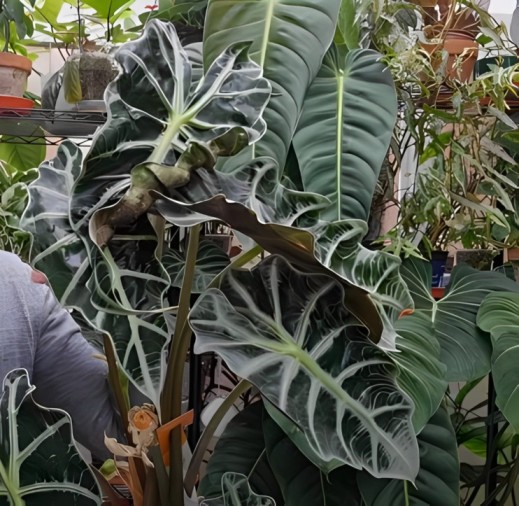
About Alocasia Amazonica Polly
Both the hybrid plants Alocasia polly and Alocasia amazonica exist. The only significant difference between the two species is their size: the ‘Polly’ variation continues to be somewhat smaller.
Even though they are difficult plants, if you can meet their demands, they are absolutely worth the purchase. They have magnificent foliage, which is made even more beautiful when light filters through the tiny leaves.and after that we explain the Alocasia Amazonica Polly care for the plant.
For all the information you need about Alocasia amazonica and Alocasia polly care, keep reading!
Tip: These maintenance recommendations also apply to other Alocasia cultivars that are extremely similar, such as Alocasia ‘Bambino.’
Alocasia Amazonica & Alocasia ‘Polly’ Care
Both of these Alocasia species are not native to the Amazon jungle, despite what their names would imply.
Although the species was generated artificially, its ‘ancestors’ were naturally found in Asian rainforests, which provides us with some helpful care guidelines to bear in mind when cultivating this plant at home. There should be filtered light, a wet habitat, and somewhat high temperatures.
These recommendations are a bit more crucial for Aloe ‘Polly’ and Aloe amazonica than for the majority of other plants. They are highly picky and if care is not given, they will swiftly disappear or go into hibernation.
Let’s clarify a few of these name misunderstandings, shall we? Although numerous additional species have been suggested as potentially being involved, Alocasia amazonica is most likely a hybrid of Alocasia sanderiana and Alocasia watsoniana. Alocasia ‘Polly’, a cultivar of this hybrid, is really short for Alocasia amazonica ‘Polly’.
And also Alocasia Amazonica Polly care is very important for the plant
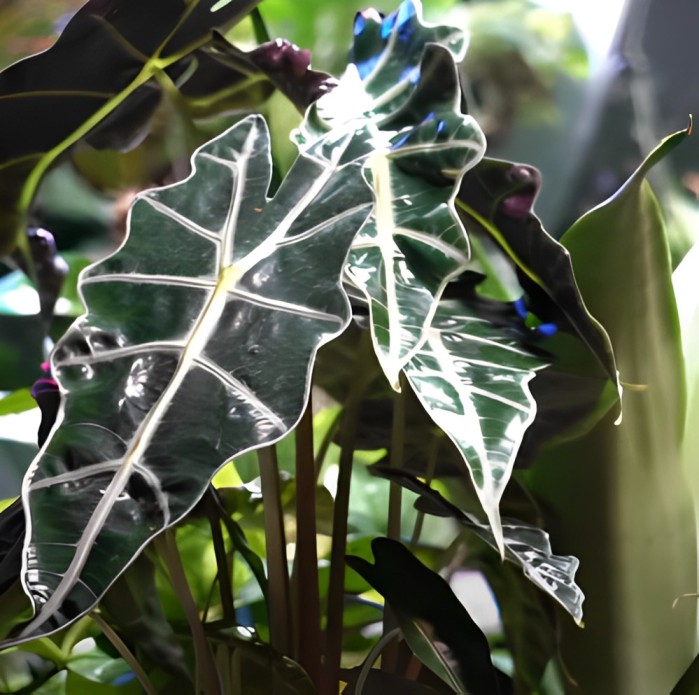
Alocasia ‘Polly’ & Alocasia Amazonica Location And Temperature
Finding the ideal location and temperature range for these Alocasia types can be difficult because replicating rainforest conditions is so important to their survival.
Light
Locate a location with good light that is not direct. This plant won’t respond well to intense direct light since larger tree canopies in rainforests filter out the sun.
Even though it will burn in direct sunlight, you should still put your Alocasia close to a window. Find one that doesn’t get direct sunlight, especially not in the middle of the day. If you relocate the plant to an area with more light, be sure to gradually acclimatise it.
If necessary, a sheer curtain placed in front of the window and the plant can assist filter off the sun’s harshest rays.
Alocasia Amazonica Polly care is imporatant with light.
Location
A greenhouse with adjustable humidity and temperature is the best environment for Alocasia ‘Polly’ and Alocasia amazonica. Fortunately, with a little more care, they may also be cultivated indoors.
Humidity is one of the most crucial elements in maintaining the happiness of your Alocasia “Polly” or Alocasia amazonica.
there are other methods (described below) to ensure that the air is sufficiently moist, these plants will undoubtedly benefit from being placed in the kitchen or bathroom.Locations also important for Alocasia Amazonica Polly care
This is the ideal choice for your greenhouse cabinet, if you have one. A humidity box, which is just a transparent container with sphagnum moss inside to maintain the happiness of tropical plants, might be a low-cost alternative.
Temperature
Alocasia ‘Polly’ and Alocasia amazonica do not like cold temperatures at all because they are tropical plants. In fact, exposure to cold can lead them to enter a state of hibernation or perhaps cause them to disappear entirely.
Keep these plants away from draughty areas and any single-pane windows that might not be adequately soundproofed. The plant will dry out too rapidly if it is placed near a heater or directly underneath an air conditioner. Temprature is need for Alocasia Amazonica Polly care
Alocasia amazonica houseplant on white background | Full Alocasia amazonica care guide
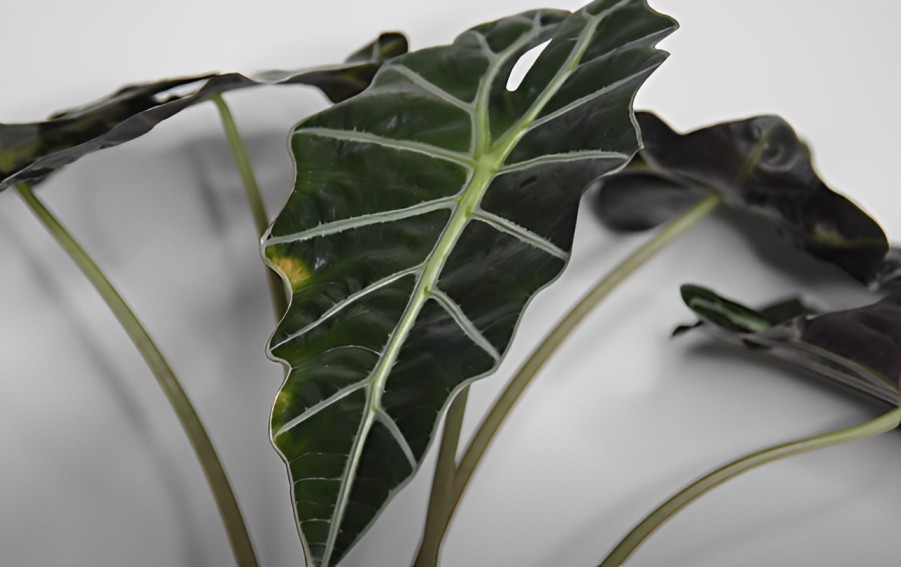
Planting Alocasia ‘Polly’ And Alocasia Amazonica
Soil
However, like with virtually all plant species, it’s not a good idea to keep the soil overly damp. These plants should be maintained moist. Root rot and other issues may materialise very rapidly! Particularly aroid plant roots require a lot of air spaces and rapid drainage.
For your Alocasia ‘Polly’ or Alocasia amazonica, you can purchase an aroid soil mix, but you can also make one yourself quite easily. These light, potting soil-free mixtures are popular with indoor plants. When you DIY, you might save money if you have a lot of greenery.Soil dranaige and capacity is useful for the Alocasia Amazonica Polly care
For a basic Aroid mix (referred to as 5:1:1), just combine the following:
5 parts orchid bark
1 part perlite
1 part sphagnum moss
Planting
Always choose a pot with a drainage hole so that any extra water may be quickly drained. In the spring, if your Alocasia ‘Polly’ or Alocasia amazonica has outgrown its container, you can repot it.
It’s typically not required to repot these plants every year because they don’t mind a little overcrowded habitat.Alocasia Amazonica Polly care are explain in this.
Alocasia x amazonica houseplant
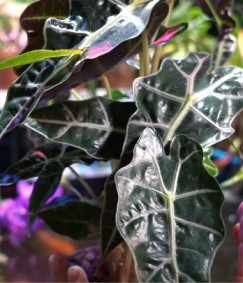
Watering Alocasia ‘Polly’ & Alocasia Amazonica
Take the time to establish a watering schedule that works for Alocasia ‘Polly’ and Alocasia amazonica since proper watering is a crucial part of plant maintenance.
No two watering schedules will be the same since the quantity of water that each plant requires varies on the environment, including the amount of light and the humidity of the air.Water also important for Alocasia Amazonica Polly care
While the plant is in full development mode throughout the summer, the soil should be damp (but not wet or drenched!). Allow the soil to dry out a little bit more during the winter when growth is sluggish or nonexistent, but never totally.
Humidity For Alocasia ‘Polly’ & Alocasia Amazonica
As was previously said, the environment around your Alocasia ‘Polly’ or Alocasia amazonica should remain extremely humid. Considering how dry our homes may get, more so than the usual one. These types of tropical indoor plants often suffer, especially in the winter.
What can you do, then, to ensure that your plant is at ease? Although many sites still advise using a humidity tray with stones and a layer of water or routine spraying, none of these actually makes much of a difference.
Instead, you can try:
Grouping plants together to create a mini rainforest environment.
Running a humidifier.
Using a greenhouse cabinet, old aquarium or humidity box.
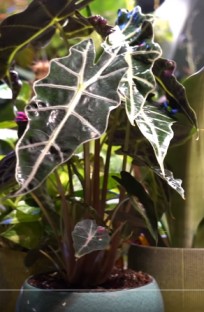
Alocasia ‘Polly’ & Alocasia Amazonica Propagation
By splitting the rhizome, Alocasia ‘Polly’ and Alocasia amazonica are both simple to grow. Simply take out the offsets you want to plant someplace else in the spring or summer (when you are repotting, for instance) by carefully removing them.
The whole Alocasia propagation guide has further details on how to divide this plant.
Alocasia amazonica houseplant and other plants.
Feeding Alocasia ‘Polly’ & Alocasia Amazonica
As long as your Alocasia ‘Polly’ or Alocasia amazonica is growing, you may feed it once a month with a diluted liquid fertiliser.
When the plant is dormant or during the winter, entirely stop feeding it.
Alocasia Amazonica & Alocasia ‘Polly’ Dormancy
Your Alocasia amazonica or “Polly” plant may become dormant if the lighting is insufficient or it gets a little too cold. Yikes! This indicates that it stops growing and that it will probably also lose some of its leaves. Although it isn’t appealing, it doesn’t always indicate that your plant is dead and gone.
How can you reawaken your Alocasia plant if you unintentionally let it fall dormant? Make sure it is still alive. If the corm or bulb is still solid, everything should be fine.
You might want to wait till spring if you’re in the midst of winter. This increases the likelihood that your Alocasia will live after it wakes up.
Ready? Start upping the light, temperature and moisture levels. Consider placing the pot with the bulb on a heat mat, make sure it gets lots of light and shower the soil regularly. Try watering with lukewarm water.
Hopefully, your Alocasia will soon begin to blossom once again. Make sure the environment never drops below room temperature and that there is always sufficient of light to avoid this from happening again.
Did you know? Although their flowers aren’t very spectacular, these Alocasias do sometimes bloom in the home with the right care. A nice sign your plant is happy!
Is Alocasia Toxic To Cats And Dogs?
Hopefully, your Alocasia will soon begin to blossom once again. Make sure the environment never drops below room temperature and that there is always sufficient of light to avoid this from happening again.
Buying Alocasia Polly And Alocasia Amazonica
Although I’ve seen them for sale in several locations throughout the year, it’s somewhat hit or miss if a neighbourhood plant shop stocks these species.
You may also acquire Alocasia ‘Polly’ online from this page if you don’t want to take the chance of going to the store and buying nothing.
Please feel free to leave a comment below if you have any more queries on how to care for Alocasia ‘Polly’ and Alocasia amazonica or if you’d like to discuss your own experiences with these eye-catching houseplants.
Conclusion
Even though some plants can need special care, the effort is worthwhile because of their gorgeous leaves. Regardless of whether you select Alocasia Amazonica or Alocasia Polly, their distinct beauty and charm make them a valuable addition to any collection of indoor plants.
Refer back to this guide or speak with knowledgeable plant enthusiasts if you need additional details on how to care for these plants. Enjoy your garden
FAQs
Does alocasia Polly need sun?
Alocasia Polly thrive in medium to bright, indirect sunlight.
How do you take care of an alocasia Polly?
Alocasia Polly plants need constantly be kept damp, but unlike nearly all other plant species, the soil shouldn’t be completely wet since this might lead to root rot and other issues.
Does alocasia amazonica need sunlight?
These plants need bright indirect light to do their best.
How do I make my alocasia Polly happy?
Maintain a warm, humid environment for your Alocasia Polly in terms of temperature and humidity.
Where should I place alocasia Polly in my house?
Put your alocasia Polly near a window that faces east or another location with plenty of bright, indirect light.

